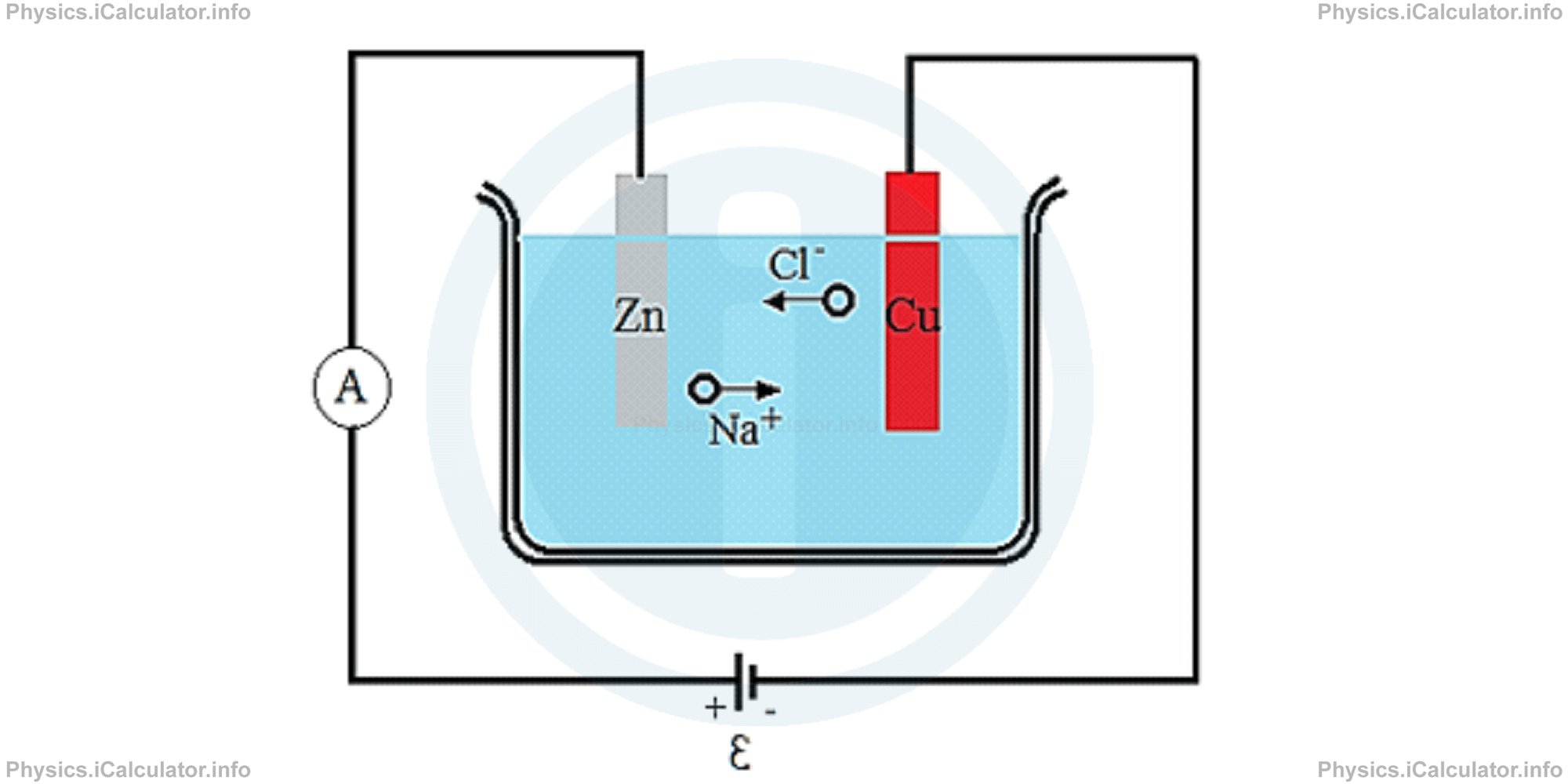Menu
Physics Lesson 15.8.3 - Electric Current in Liquids
Please provide a rating, it takes seconds and helps us to keep this resource free for all to use
Welcome to our Physics lesson on Electric Current in Liquids, this is the third lesson of our suite of physics lessons covering the topic of Miscellaneous, you can find links to the other lessons within this tutorial and access additional physics learning resources below this lesson.
Electric Current in Liquids
In tutorial 15.4 "Electric Circuits. Series and Parallel Circuits. Short Circuits", we have explained how a wet cell works. A wet cell is an example of the existence of electric current in liquids.
Pure water does not conduct electricity. Therefore, we must add some acidic element in it. The cheapest and most accessible material for this purpose is the table salt.
As explained earlier, the liquid acid is known as electrolyte and the two metal plates (usually made of zinc and copper) are known as electrodes - zinc electrode that is connected to the positive terminal of battery is called anode while the copper electrode connected to the negative terminal of battery is called cathode. The current inside the electrolyte is conducted by the positive and negative ions (electricity carriers) while electrons conduct the electricity through the conducting wires outside the electrolyte. The figure below shows how the electricity produced by a wet cell flows when table salt (NaCl) is used as an electrolyte.

The zinc plate (anode) gains electrons (it becomes negatively charged) while the copper plate releases them. These electrons travel through the electrolyte in the ionic form, i.e. some molecules of the electrolyte dissolve and become positive and negative ions. This process maintains a steady flow of current in the circuit.
The process of charges flow through an electrolyte is called electrolysis.
You have reached the end of Physics lesson 15.8.3 Electric Current in Liquids. There are 5 lessons in this physics tutorial covering Miscellaneous, you can access all the lessons from this tutorial below.
More Miscellaneous Lessons and Learning Resources
Whats next?
Enjoy the "Electric Current in Liquids" physics lesson? People who liked the "Miscellaneous lesson found the following resources useful:
- Electric Current Liquids Feedback. Helps other - Leave a rating for this electric current liquids (see below)
- Electrodynamics Physics tutorial: Miscellaneous. Read the Miscellaneous physics tutorial and build your physics knowledge of Electrodynamics
- Electrodynamics Revision Notes: Miscellaneous. Print the notes so you can revise the key points covered in the physics tutorial for Miscellaneous
- Electrodynamics Practice Questions: Miscellaneous. Test and improve your knowledge of Miscellaneous with example questins and answers
- Check your calculations for Electrodynamics questions with our excellent Electrodynamics calculators which contain full equations and calculations clearly displayed line by line. See the Electrodynamics Calculators by iCalculator™ below.
- Continuing learning electrodynamics - read our next physics tutorial: Electric Current. Current Density
Help others Learning Physics just like you
Please provide a rating, it takes seconds and helps us to keep this resource free for all to use
We hope you found this Physics lesson "Miscellaneous" useful. If you did it would be great if you could spare the time to rate this physics lesson (simply click on the number of stars that match your assessment of this physics learning aide) and/or share on social media, this helps us identify popular tutorials and calculators and expand our free learning resources to support our users around the world have free access to expand their knowledge of physics and other disciplines.
Electrodynamics Calculators by iCalculator™
- Amount Of Substance Obtained Through Electrolysis Calculator
- Charge Density Calculator
- Electric Charge Stored In A Rc Circuit Calculator
- Electric Field In Terms Of Gauss Law Calculator
- Electric Power And Efficiency Calculator
- Electron Drift Velocity Calculator
- Equivalent Resistance Calculator
- Force Produced By An Electric Source Calculator
- Joules Law Calculator
- Ohms Law Calculator
- Potential Difference In Rc Circuit Calculator
- Resistance Due To Temperature Calculator
- Resistance Of A Conducting Wire Calculator